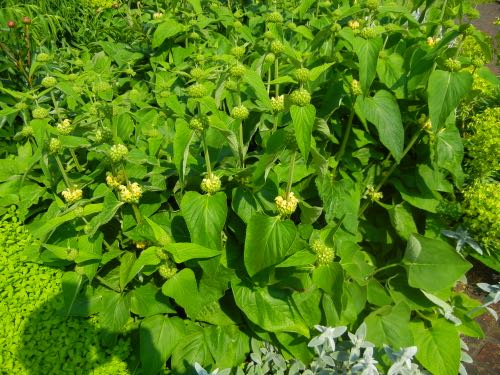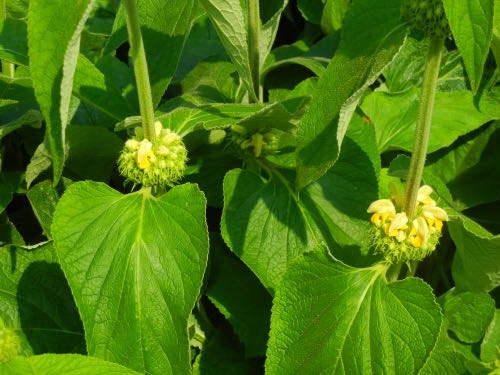Discover the Beauty of Phlomis russeliana: A Stunning Perennial Treasure
Phlomis russeliana, also known as Turkish Sage or Jerusalem Sage, belongs to the Lamiaceae family of plants. It may also be referred to as Phlomis samia or Phlomis viscosa. This deciduous perennial is clump-forming and reaches a height of 90cm or 3ft. Its large, ovate leaves have a distinctive greyish-green color and a rough texture. Phlomis russeliana originates from Southwest Asia, adding an exotic touch to gardens and landscapes.
Characteristics and Description
Turkish Sage, or Phlomis russeliana, is a captivating upright herbaceous perennial that belongs to the mint family. Growing up to 3 feet tall and 2 feet wide, it thrives in open woods and clearings in Turkey and Syria. The plant boasts bold, aromatic, and rough-textured basal leaves that resemble sage, with a gray-green hue and cordate bases.
These basal leaves can grow up to 15 inches tall. From July to September, columnar 4-angled flowering stems rise well above the foliage, bearing whorled clusters of tiny, hooded, pale yellow tubular flowers. The blooms add a touch of delicate beauty and can be enjoyed as cut flowers or incorporated into dry arrangements. As the seasons progress, the flowers give way to ornamental seed heads that remain attractive throughout fall and winter.
Origin, Native Habitat, and Discovery
Phlomis russeliana originates from open woods and clearings in Turkey and Syria. Its captivating presence has made it a cherished perennial in these regions. The specific epithet of “russeliana” honors John Russell, the 6th Duke of Bedford, who was a passionate advocate for botany, gardening, forestry, and agriculture in England.
How to Care for and Maintain Phlomis russeliana:
To cultivate and care for Phlomis russeliana, consider the following guidelines:
Sunlight and Soil Requirements: Phlomis russeliana thrives in full sun or partial shade. It flourishes in fertile, well-drained soil that offers optimal growing conditions for the plant.
Propagation and Disease Resistance: Propagate Phlomis russeliana through seed or division in spring. This resilient plant is generally disease-free, ensuring easier maintenance and care.
Watering and Moisture: While Phlomis russeliana is tolerant of dry soil conditions in cooler summer climates, it appreciates regular moisture in hot summer climates. Avoid overwatering and ensure the soil has proper drainage to prevent waterlogging.
Growth Habits and Spread: Phlomis russeliana rapidly spreads through rhizomes, forming a ground cover that suppresses weeds without becoming invasive. Its fast growth allows it to reach heights of 2-3 feet (60-90 cm) and spread 2 feet wide (60 cm).
Adaptability and Garden Use: Jerusalem Sage is an adaptable plant, suitable for a range of garden settings. It excels in full sun but can tolerate light shade. Ideal for dry sunny borders, meadows, cottage gardens, or wild gardens, it complements other blue-flowering perennials like lavender, hardy geraniums, or ornamental grasses. Phlomis russeliana is also a great choice for cut flowers and adds charm to dried arrangements. Additionally, its drought tolerance once established makes it a low-maintenance and trouble-free addition to your garden.





